Influencer marketing has grown a lot in the past couple of years. I’ve witnessed this change and closely observed how the evolution impacts marketing strategies.
And I’ve also observed a change in the perception of influencer marketing even among marketers who were once skeptical about it. This change in perception is mainly fueled by the growing awareness of the actual benefits of influencer marketing.
I’ve talked about how influencer marketing helps attract a new audience and win their trust. And I’ve also explained how influencers can drive engagement and boost conversions. Several studies such as Linqia’s have proven these benefits. Another valuable benefit of influencer marketing is in lead generation and that’s what I’m going to discuss in today’s post.
How Influencers Generate Leads
Lead generation involves creating customer interest in a product or service and initiating enquiries about it. Influencers can effectively do this because of a number of reasons.
According to Think with Google, 70% of teenaged users on YouTube relate better to YouTube creators than to traditional celebrities. And four out of every 10 millennial YouTube users say that their favorite creator has a better understanding of them than their friends do.
These numbers prove that influencers have a good understanding of their audience and they are relatable. So they know how to create content about a product or service in a way that would resonate with their audience.
Instead of a celebrity posing with a product, the audience is more likely to be motivated by seeing an influencer using the product, reviewing it, showcasing how it can be used, etc.
In fact, six out of 10 YouTube subscribers would even follow a creator’s advice regarding what to buy over the recommendation of a celebrity. This proves just how powerful an influencer’s content and opinion can be.
Not only do they generate interest in a product or service, they can also influence people’s decisions about said product or service and compel them to take action.
The Collective Bias team also conducted a study using Data Science on the impact of influencers. This study showed that influencer marketing content was able to drive more product trials for a certain rice brand. With influencers promoting coupons for the product, the coupon redemption rate increased to 44.5% when previously their redemption rate stood at only 15%.
In the same study, influencers were also shown to increase engagement in the form of foot traffic. 48% of the consumers that were exposed to influencer content ended up visiting the retailer’s brick-and-mortar store. But only 29% of consumers that were not exposed to influencer content ended up visiting the retailer.
These are all proof of how influencers or influencer marketing can effectively generate leads for businesses. More product trials and coupon redemptions prove that influencers can increase interest in the product and compel people to try the product out. And more in-store visits also suggest that the influencers were effectively compelling people to visit the store.
Influencer Marketing Strategies that Generate Leads
Influencer marketing has dominated the B2C landscape for a couple of years. I’ve even helped a lot of B2C clients in executing campaigns that raise brand awareness and generate valuable leads. These campaigns would then eventually increase their revenue.
A lot of the B2C influencer marketing campaigns I’ve witnessed (and helped execute) involved authentic product positioning and honest reviews.
Maintaining authenticity is always crucial when it comes to influencer marketing campaigns. You’re working with influencers because people trust them and their opinion. But when a piece of content seems overly promotional and unnatural, the influencer could lose the trust of many followers.
Here’s an excellent example of influential TV host Jessi Cruickshank promoting Audible:
Her Instagram posts are always funny and relatable for parents as she doesn’t hesitate to talk about the struggles of parenting. Even in this promotional post, she maintains her usual honest and funny voice that makes the content relatable for moms like her.
By positioning the productin a relatable and even light-hearted manner, influencers can incite interest in it and turn many of their followers into leads. Jessi’s post has since generated close to 8,500 likes and several comments.
In the case of B2B influencer marketing, however, it’s still a bit complicated. B2B marketers are still unsure what kind of campaigns to execute and how to work with influencers in such a way that they generate valuable leads.
One of the most common influencer marketing strategies executed by B2B marketers these days is influencer interviews. Here, you will be interviewing a relevant industry expert on a topic that’s relevant to you. And the interview can be in any format – a blog post, a video, a webinar, or even a podcast.
However, this strategy may not be too effective for generating leads. It may be able to drive traffic and engagement. But unless the topic is specifically on a product or service that you’re selling, you may be unable to guarantee that people would be interested in learning more about your company.
Instead, I’d recommend that you build a relationship with industry experts and get them to test out your product or service. From here, you can come up with a strategy in which you infuse these experts’ opinions in some way or another.
You could get them to write or create a full piece of review content, for example. This would have a significant impact in your lead generation efforts. After all, it’s an authority figure discussing your product and what they think of it.
You could also collect short reviews from multiple experts and compile this into a blog post or include them in your testimonial page.
Conclusion
These are just a few ideas that you can use for generating leads with the help of influencers or influencer marketing. And you can get a clear idea the impact of influencer content on your lead generation efforts. For more strategies that will showcase how to work with influencers and generate leads, check out the insights from experts below.
#1. Ted Rubin – TedRubin.com

Yes, you can measure and track numbers, and bang people relentlessly over the head… and make sales. BUT… Your Brand/Business is what you do; your Reputation is what people Remember and Share.
If you take the relentless route you will most probably being doing long-term damage to your brand that will not necessarily be evident in the short-term numbers, but most definitely will be evident over time.
Be genuine! Be consistent! Be human AND do whatever you can to “connect with” (very often the most valuable Influencers are your customers and employees) and “partner with” Influencers who truly have an affinity for your brand.
#2. Mark Schaefer – BusinessesGrow.com

Think of them as a friend. Friends support friends when they can. Develop influencer friendships and you'll realize long-term benefits, just as you would with friendships.
#3. Steve Rayson – BuzzSumo

Webinars with expert influencers are also a great way to establish and maintain your authority. The webinars that work best in my view are educational and aim to share knowledge rather than to promote a product or service. (You can see examples here.)
#4. Ian Cleary – RazorSocial
The key to generate leads through influencer marketing is identifying the most relevant list and figuring out how you can help them before you look for their help. I make a list and then I start reading and sharing their content, reviewing their books online, guest posting on their site, meet them at conferences.
My only goal in the short term is helping them. So many influencers are me how they can help me because I spent a lot of time investing in helping them. When you build up a relationship and trust then you can start talking about partnering together. You'll then generate your leads.
I track and manage all my influencer marketing outreach through my tool OutreachPlus.com. It's so easy to lose track of your outreach.
#5. Eric Enge – Stone Temple

But if you're looking to generate a flow of leads over time, it's best to pursue multiple strategies that are integrated together on an ongoing basis.
That's exactly what we do at Stone Temple. Our strategy incorporates all of these components:
1. Publishing unique data research in studies that we put together.
2. Our Here's Why video series that now has over 140 episodes published.
3. Speaking at conferences on a regular basis.
4. Publishing content monthly on the major sites that cover our space (Search Engine Land and Moz).
5. Highly active social media presences.
6. Building relationships with influencers based on mutual respect and added value.
All of these things work together to generate a lot of awareness of who we are. And all the work that goes into items 1 through 5 in the above list help us with the depth of our influencer relationships.
This helps us drive the best results from our influencer marketing efforts.
#6. Michael Brenner – Marketing Insider Group

Using influencers to create content mapped to the entire buyer journey is the best way to generate leads and ROI for influencer marketing.
#7. Mari Smith – MariSmith.com

Campaigns should have very clear, simple calls-to-action. Ideally, only work with influencers who agree to endorse companies, products and services that they truly believe in and that align with their values. Influencer marketing ensures maximum response, lead generation and conversions.
#8. Cynthia Johnson – Bell + Ivy
Think about the influencers that exist within your company first. Employees sharing content about a company they work for typically see a 500%+ increase in engagement. Sometimes that can lead to better results than paying influencers.
#9. Brian Fanzo – iSocialFanz

When partnering with influencer you must select the right influencer for your brand that no only reaches the audience that you want them to reach but has established trust with that audience.
After selecting the right influencer or influencer marketing strategy with the right audience it then requires trust and a tangible way of measuring goals with that influencer allowing the influencer to create the type of native content that has established the trust with that audience but in a way that can be measured and link back to the brand.
When this process is followed creating the content and capturing the lead ends up being the easy part.
#10. Evan Carmichael – EvanCarmichael.com

They should recognize your name and face when you reach out to them to ask for support because you've been so active in their community and you are one of them instead of being an outsider cold spam pitching your idea.
#11. Lilach Bullock – LilachBullock.com

Your approach to each campaign should vary depending on the influencer you’re using. This is a mistake that I’ve seen many brands doing; they reach out to an influencer and they try to control the whole thing, when in fact, the influencer knows best what works with their particular audience and what doesn’t.
#12. Brandon Brown – Grin.co

#13. John Rampton – JohnRampton.com

#14. Rebekah Radice – RebekahRadice.com

You want deeply invested influencers that activate their audience. Once you've found that influencer, reach out with your campaign idea.
The goal of influencer marketing is to test the waters, but also gauge effectiveness. A sponsored post, competition or giveaway can be a great way to tap into that audience, expand into a new marketplace, and grow your social footprint.
#15. Gil Eyal – HYPR

If you need a quick fix, create videos with influencers on Facebook and have them tag your brand. Identify the ones that get clicked on and convert to sales, and start targeting similar audiences on Facebook with this content through their digital distribution channels.
#16. Sam Hurley – OPTIM-EYEZ

This way, leads aren't only merely generated but nurtured in a fashion that potential customers expect after initial exposure to such experts.
Think about it: These particular leads are attracted by an influencer relationship — influencer marketing should be continuously met with engagement from these people throughout the funnel.
Rewind back to actually generating leads!
Any form of influencer content should be:
- Targeted to your ideal audience
- Aesthetically beautiful (wherever it's positioned)
- Littered with powerful lead magnets such as content upgrades in the form of PDF downloads or some sort of attractive bonus, collaborative content from you and the partnering influencer — not publicly available.
Alternatively: A proprietary tool could be promoted, whereby an email address or other form of contact details are needed in order to use it.
e.g. An SEO health check or PPC analysis … Conducted by real humans! (Remember to also use influencer marketing strategy here, too.)
Whatever the magnet, make sure it's worthwhile. The worst feeling (as a ‘lead') is subscribing to receive supposedly AWESOME material that actually turns out to be a bland Word document with unformatted text and content found anywhere else online!
#17. Warren Whitlock – WarrenWhitlock.com

We've been taught marketing that worked well in the 20th Century. The winners back then were the one with the most money to have a large presence in newspapers and broadcast. We'd designed a message and push it out.
But marketing today needs to stand out from the clutter of ads.
People don't like the interruption of banner ads pre-roll commercials. We naturally want to be sold but we love to shop and buy. Good marketing strategy helps people buy.
Influencer marketing at it's best builds relationships and allows people to get what they want. We are all connected now. There are millions of people looking for what you offer. They will find you if the know about you, see what they like and develop trust.
Trust comes from their relationship with influencers. So trust the influence who understands his network and audience.
Support influencers by sponsoring the content they create, listening to their needs and helping them succeed. They don't need to shill your product… just let them fall in love with it and share that along with the other topics they talk about.
#18. Leonard Kim – Influence Tree

Sure, you can take advantage of their audience and the distribution of the content into their feeds, but the true value comes from being able to use that image with their endorsement on your own channels.
To generate leads with Influencer marketing or by your new endorsement, what you can do is set up an opt-in campaign with a trackable link, run ads behind the content and if you have social media pixels set up on your site, you can track conversions from your campaign, then retarget the people who have visited your site and use a strategy to remarket your campaign to them.
This is where the true value is, where you are using the asset that is created on your channels with your own funnels. The value is not in the initial sponsorship of the product on their channels. That's just an added benefit.
#19. Ian Brodie – IanBrodie.com

I believe we spend far too much time in influencer marketing trying to incentivize people who don't know us to promote us rather than taking the time to build strong relationships with people who can then make informed and ethical recommendations because they genuinely know our capabilities rather than because we're paying them or doing something quid pro quo for them.
#20. Ruben Gamez – Docsketch

Sometimes that means reaching people, but many times that means being featured on certain podcasts, blogs, or email lists.
It's surprising how often the people or resources influencing the influencers don't have that big of an audience, and are much easier to reach than what everyone is going after.
#21. John Hall – Influence & Co.

First, understand that engaging with the right influencer is important; reach out to someone who actively contributes to a publication platform you know your audience reads and trusts.
If this contributor mentions you in one of his or her articles, this can result in a spike in referral traffic. Influencer marketing can also help you earn quality backlinks, which allows you to boost your search rankings and visibility, too.
The published content can then be used as a tool by your sales team for establishing credibility and strengthening relationships with valuable contacts.
#22. Michael Kawula – Social Quant

Next true Influencers, those who have their audience’s attention, are asked to collaborate all the time. Thus you want to make sure they know who you are, that you can offer them value and you’ve got a product, service or cause they and their audience have also.
This is why I’m a big believer in the old Chinese Proverb:
“The best time to plant a tree was 20 years ago. The second best time is now.”
Start building your social media presence early, even if you haven’t launched your product or service yet. Once you know your passion, go out and connect with people on Facebook, Twitter, Instagram, LinkedIn and any other area those with similar audiences are hanging out.
Follow these people, engage with them and share their content. This will build good will and your recognition in the community.
When you’re ready to launch, these are the people who will send you the most leads for your business.
Also, though whale hunting (going after the big influencers) never hurts, make sure to connect with those that have good engagement in smaller communities. This is the low hanging fruit and often they’re not approached as much.
I’ve seen plenty of times when those with smaller audiences can actually send you more leads because their community is tight and responsive.
Lastly if you want to get leads from influencer marketing or influencers follow Gary Vaynerchuk’s solid advice of 51/49. Listen and share others work more than you’re asking, but most importantly if you want to succeed in business, don’t forget to ASK for the business.
#23. Shama Hyder – Marketing Zen

It’s a competitive space but the reward for winning a customer’s first purchase can be huge. Numerous studies have shown that if a brand or company can get their product or service to a customer first, that customer tends to be loyal towards that particular brand for a lifetime.
One of the ways brands are helping to get their name in front of the eyes of customers is through loyalty programs and word-of-mouth marketing. In the online space, this kind of word-of-mouth marketing comes via influencers or influencer marketing and their highly engaged audiences.
This tends to create customers that frequently engage with your brand and who are more more likely to share their passion about your product or service with the people they know. The rise of influencer marketing gives brands an online social presence and, as such, has helped brands get their names to the customers they care about the most.
Here are 5 steps to consider in your lead generating influencer marketing program:
1. Put your audience front and center
Since your ultimate goal is to obtain qualified leads and convert visitors into paying customers, it’s only logical to build your marketing strategy around them. This means you should focus all of your efforts into getting to know your audience first and anticipate how they might react. It will also help you figure out which influencers your target demographic follow and the type of content they prefer.
People are more inclined to value the opinions of actual people, in this case influencers, instead of those of a company, because they are more likely to be genuine. They are independent third parties, unlike the companies trying to sell them their products.
2. Decide what type of influencer you need for your campaign
Once you’ve figured your target audience, it is time to decide what sort of influencer or influencer marketing strategy would best serve your campaign. There are numerous aspects to consider when doing this, such as the tone with which the influencer addresses the readers/viewers.
Depending on your niche, you may need someone who’s efficient at getting them to take action, or a thought leader, or perhaps even an industry insider.
Aside from choosing the niche, the topics, and the number of influencers you want to get on your side, you also need to decide your goals.
3. Define what success means to you.
- Define Key Performance Indicators (KPIs) such as:
- Reach/Impressions (branding)
- Likes (brand sentiment
- Comments (engagements)
- Shares (digital word-of mouth)
- Sign-ups (leads)
- Downloads (apps or whitepapers, etc.)
- Emails
- Clicks (website, landing page, blog, etc.)
If your target is B2B, remember, buyers tend to take longer to make purchasing decisions, since they are often seeking long-term relationships with vendors. This means it will take some time for audiences to trust the relationship and camaraderie they see between you and the influencer.
However, the payoff for patience can be huge. Ultimately, and particularly so in the B2B influencer marketing world, you are looking for leads who will have a long-term relationship with your company and who will turn into influencers themselves, motivating others to jump on board.
4. Vet the influencer
Just because an influencer has a large following does it mean you should partner with them. The overarching question you should ask is, “do they have influence?”
To better answer this question, do your due diligence and check the engagement rate of their last 10 – 30 posts on a specific channel, and look at the context of the engagement. Are the people engaging the type of people that are likely to buy your product or service? If not, continue your search. Don't fall victim to large following.
5. Measure the results
After the campaign has been executed and amplified, gather all metrics for review for and compile into a campaign report. Recording and taking screenshots of social engagement is an important indication of audience sentiment and response to campaign.
Google Analytics and conversion tracking are paramount in track lead generation and ultimate ROI campaign calculation. The above metrics will give you a baseline in which to compare against the influencers past campaigns to gauge how branded content compared to organic content.
#24. Brian Carter – The Brian Carter Group

So, we get influencers who are also happy customers to do unpaid, unrewarded testimonials. They can be text or video. Then we advertise those testimonials to ideal customers.
The influencer may put it out to their own network as well, but that's gravy. Sometimes the influencer has our ideal customers in their network, and sometimes they don't. We find that, to be sure we reach our clients' ideal customers, the ad targeting in Google or Facebook is best.
That allows us to scale and control the lead gen and other marketing campaigns. That way, we know the best targeting and we can turn up what works and turn down what doesn't. We also find that those audience targets are typically much larger than the influencer marketing audiences, so the potential leads and business is greater.
#25. Mike Allton – The Social Media Hat

Great round-ups can be EXTREMELY effective at generating real, targeted interest.
First, since you're incorporating the advice and participation of key influencers, you get to play off of the two main tenets of influencer marketing:
1. Reach the influencer's audience.
2. Demonstrate the influencer relationship to your own audience.
You see, any time you are able to have an influencer participate in a roundup it's very likely that they'll share that roundup with their own audience, effectively introducing your brand to new people.
And when your own audience sees that you have a relationship with that particular influencer, that tends to lend greater authority to your own brand.
I mean, clearly, Shane's audience is going to be super impressed that he got *me* to participate in this round-up! 😉
Second, and this is critical, whatever the topic of your round-up, it must be UNIQUE and RELEVANT.
Look, I get asked all the time to participate in round-ups and I simply ignore questions like, “What's your favorite social network and why?” That's middle school-level questions.
What is your audience *really* interested in, and how can a unique collection of influencer answers really address that? Trust me, not only will your audience be more interested in the answers, so will the influencers!
I've done a few of these and every time I try to come up with one or more questions that are really special. For instance, in this round-up I asked over 50 prominent bloggers and entrepreneurs what their Most and Least effective monetization techniques had been. The influencers loved participating, and the audience LOVED reading all of the ideas!
Kudos to Shane for following suit and asking a really good question here. I hope you take the time to read all of the responses and see how they can help you improve your own influencer marketing!
#26. Peg Fitzpatrick – PegFitzpatrick.com

Make sure that the influencers are following the FTC guidelines for disclosing that they're working with you.
#27. Viveka von Rosen – Vengreso

The reason I use Publisher in addition to my own platform, is that people tend to engage more on Publisher. More importantly, it's easy for me to tag the Influencers and point back to their profiles. This naturally associates me with them on a deeper level.
In fact, if it's an extensive project, I can add the post link to the Projects section on LinkedIn and add their names to it as long as we are connected.
Additionally, when I share the article and tag them in the update, they will be notified and might then share the post on LinkedIn with their extensive networks.
#28. Shelly Kramer – V3B

But success also depends on crafting the right marketing campaign in which to involve the influencer and developing an “ask” or a CTA that not only makes sense, but which can deliver value for the brand/agency.
The act of an influencer writing a blog post (or developing some other content) on a topic for a brand or agency, hitting “publish,” and then sharing x number of times in the social media space is not a formula for influencer marketing success. Unfortunately, all too often, that's how influencer campaigns are developed.
Success with influencer campaigns, as with anything else, starts with strategy. When you have the right strategy in place, the right influencers as part of your campaign, and can work together to be successful, chances are good you'll end up with those leads you seek.
#29. Aaron Agius – Louder Online

One of the best ways to build something genuine is to invest in becoming an influencer yourself through inbound marketing, so that the people you're reaching out to respect you (or even come to you in the first place).
But as you're using influencer marketing to build your own audience, keep in mind that it's important to target influencers with the same audience or similar products/services as yours – and to invest in the relationships you build regularly so that it's not a “one-and-done” thing.
Adding long-term value – the way I did publishing complete guides in partnership with Neil Patel early in my career – is a necessary part of standing out from the crowd of people doing influencer marketing wrong.
#30. Nadya Khoja – Venngage

Depending on the problems our audience is facing, we will reach out to influencers that specialize in a certain area to provide tips which we later repurpose into an ebook and infographic.
We then share the link to the ebook not only with our own audience, but with the influencers who were featured. In turn, they share the content with their own following resulting in new leads via those who download the content!
#31. Gini Dietrich – Spinsucks

Oy.That, my friends, is a celebrity endorsement campaign, which is completely different from an influencer marketing campaign — and far more costly.
Rather than spend all of your budget on one celebrity that will build awareness, but (most likely) not generate leads or sales, build an influencer marketing strategy around those who can help you have measurable results.
I am preferential to micro-influencers — the people who have small numbers of followers, but are extraordinarily effective when it comes to recommending products or services. They tend to be the people who actually use the products and services as consumers first and then are offered some sort of revenue share later.
Because they've built a considerable amount of trust among their communities, their fans/followers/friends will buy anything they recommend (within reason—not everyone will go out and buy a Tesla or even a $2500 conference ticket).
Use tools such as Traackr or Buzzsumo to find your micro-influencers and then start to build relationships. Find people who are already fans of you/your product/service and start there. By building an influencer marketing strategy that way, you're certain to generate really good, qualified leads.
#32. Shonali Burke – ShonaliBurke.com

So the best thing you can do to generate leads is to:
a) Give them something of great value that makes them want to learn more about you. Ideally share what you've shared/talk you up.
b) Make sure you're following these conversations so that you can participate appropriately/add even *more* value.
c) Find a way to bring them into *your* network and stay connected to them.
#33. Jim Wang – Wallet Hacks

You can find super targeted folks with relatively small but very active followers. You won't discover these until you test out influencer marketing strategy with them.
#34. Joe Fields – Onalytica

Then actively promote the influencers content both organically and with paid advertising strategy to drive traffic and maximize conversions with influencer marketing.
#35. Heidi Cohen – HeidiCohen.com

Influencers are real people with their own needs and goals that may not always align with those of your business. Therefore, don’t underestimate the value of building person-to-person relationships with them. Pushing them for blatant promotion hurts both your brand and their community.
Further assess the potential for tapping into the power of micro-influencers who may have great sway with your target prospects. Micro-influencers include purchase influencers, raving fans and topic influencers. Unlike bigger name influencers, Influencer marketing have increased customer trust and may engage with prospects directly.
#36. Douglas Karr – MarTech

#37. Murray Newlands – Murray Newlands

#38. Chelsea Krost – ChelseaKrost.com

Although micro-influencers may have smaller follower count, it allows them to have a more intimate relationship with their tribe than someone who has a 500K followers. Micro-influencers are passionate about their niche, truly understand what resonates best with their audience, and can generate quality engagement and leads when aligned with the right brand message.
Micro-influencers appeal to their followers values, interests, and pain points through storytelling and providing value to their audience. If your brand can help the influencer provide value to their audience – then you’re bound to generate results! Work with (not against) the influencer to collaborate on what content format and channel will work best to get the brand message across in the most authentic way for that niche audience.
Billboard messaging simply won't work and we have to integrate influencer generated content throughout the brand's consumer journey today to see the ROI we all hope for.
#39. Adel de Meyer – AdelDeMeyer.com

Generating leads with content on social media using influencers requires two things: a high-value lead magnet and a dedicated landing page. Once you’ve created both, it’s only a matter of promoting it to the right audience.
When you hone in on the right influencers or influencer marketing startegy, you’ll boost your visibility and raise awareness within a relevant market and this improves the quality of leads that you will generate with influencer marketing.
#40. Jeff Epstein – Ambassador

#41. Maria Johnsen – MariaJohnsen.com

I get the best results though content marketing, because my readers love my articles. These are media agencies, ecommerce businesses, major player marketing and seo tool providers, software designers, HR companies, heath and dental clinics, social media marketing companies, analytics tool providers, search engine companies such as SEO and programming departments at Google Inc. Yahoo!, Bing,. Yandex and Baidu. AI tools companies, travel and fashion businesses.
These companies search my articles and follow me on social media in order to get their hands on the latest trends in the market in every niche. I create content in different languages. This way the targeted businesses in those countries read my content in their own languages.
I also promote various tools, articles and social network companies in multilingual campaigns. I explored that reaching out to the target audience via influencer marketing works and gives better results than just tweeting about their links. I don’t like direct marketing unless it is newsworthy.
For example if you and any other marketers remember a few years ago, Ning was a popular social network. Just like any other social sites, many marketers used to use many of these networks to promote their products and services. When Facebook took over the playground of social media with its massive campaigns, these websites lost their popularities.
Not that there were anything wrong with them, I think the way of their Influencer marketing strategy were not as effective as they should have been. Facebook won the game in social network, because the company’s marketing and publicity department came up with a pretty much unique concept.
How can your small business compete with big boys, the answer is : influencer marketing and word of mouth marketing. There are other ways, but I discuss about it some other time.
#42. Josh Steimle – Influencer Inc

These are getting major attention right now and they're a gold mine if you jump in right now. I've been telling short stories on my profile for the past few weeks and I've received well over 500,000 views, hundreds–maybe thousands–of comments, and yes, I've gotten real leads from it.
Go to LinkedIn right now, tell your story, invite comments, and see what happens. I've seen people go from an average of 50 views per post to 50,000 overnight.
#43. Nicholas Scalice – Earnworthy

If you can find a niche that is not too active, and write high-quality answers on a daily basis, it will certainly pay off! Of course, writing on Quora is just a very top-of-funnel strategy. But over time, you'll begin to get noticed, which can lead to more traffic and leads with influencer marketing.
#44. Chad Pollitt – ChadPollitt.com

Another way is to get four to 10 blog posts written by one or more influencers around the same topic and stitch them together as advanced content. Give the influencers author credit.
#45. Evan Dunn – Transform.co

The referral program component offers something sticky to capture contact information (leads), while the influencer outreach program fulfills the need for demand generation. The resulting feedback loop is powerful.
#46. Cameron Conaway – Reflektion

For a premium CMS plugin it may be to have an influencer offer up an engaging welcome message during the trial.
For an enterprise solution it may be about incentivizing existing influential clients to recommend your solution to others in their space or to the other brands under their umbrella.
#47. Stefan James – Project Life Mastery

It's that trust and relationship that you establish, that will make others want to know more about you, your products or services. As a result, you can easily just offer something more to your audience, such as a PDF or video, for someone to opt-in to and become a “lead” on your e-mail list.
If you're approaching other influencers, the process would be the same – find other influencers out there that have a valuable trust and relationship established with their audience, then reach out to them to offer something to their audience that is relevant and valuable to their audience, which you can generate leads to.
Influencers care about and put their audience first. As long as you respect that and are in it to add value, and not just take (get leads), then the leads will follow as a result of that.
#48. Will Blunt – Flypchart.co

The biggest mistake most people make with influencer marketing is to skip the “trust building” step. They want people to do something for them (share, link, refer), but they aren't willing to put in the hard yards to earn it.
The only way to generate leads on a consistent basis with influencer marketing is to be generous, initiate reciprocity, expect nothing in return, and eventually reap the rewards down the road.
Sure, you might get a lead or two out of spamming 1,000 people on Twitter, but is that a sustainable approach to growing your business?
#49. Renzo Costarella – Due

Giving them content to share makes their job easier so they are also more likely to share more about your brand that way.
#50. Holly Pavlika – Collective Bias

I hear it all the time, “We love the proprietary research you’ve shared, but can you provide third party validation?”
This is where influencers or influencer marketing can be instrumental. You can interview influencers to create valuable content for your corporate blog or contributed content. Ask influencers to review a product and feature their review/quote on your website. Invite influencers to serve as panelists on topics that are of interest to your top prospects and record the sessions on video to utilize in future marketing materials.
Repurpose quotes from those same sessions to leverage as content in your lead generation strategy. The opportunities for applying influencer marketing to additional marketing strategies are boundless, and they provide that valuable third party validation that brands require.
But, don’t forget that the same FTC disclosure rules apply to B2B influencers. If you pay them a stipend or pay for hotel/flights they must disclose the relationship.
#51. Jessica Sweet – Wishing Well Coaching

Take as much of the work out of the referral process as you can for them, whether that's writing email scripts, guest posts, social media updates, etc. and also provide an incentive for them to do it.
Don't just think about monetary incentives. Also partner with people who might see your ideal client as a problem client in their business.
#52. Brian Honigman – Honigman Media

Similar to dating, it's easy to settle and find a badly matched influencer in the short-term than it is to take your time to sift through the options and find the right one that's worth a long-term commitment.
#53. Barbara Rozgonyi – WiredPRworks

1. Match influencers to your ideal audiences – who are they following now on what platforms and why.
2. Host a landing page lounge with refreshing information hosted by the influencer.
3. Guide your sales process path to interact and communicate via enriching, enlightening and entertaining interactions.
4. Plug into PR (Personality + Reputation).
5. Transition your mindset from leads into relationships – who do you most want to spend time with?
#54. Tom Augenthaler – The Influence Marketer

You should ideally have a well formed picture of these people and know their desires and challenges, so finding relevant influencers who they know and trust shouldn't be difficult.
Second, have a clear set of KPIs (key performance indicators) you plan to use.
Third, be sure you communicate with the influencers clearly and let them know what you are trying to achieve with the campaign. Collaborating with them will provide you with additional ideas about what will work. Remember, they know their audiences better than you do so leverage that knowledge.
Next, if it's a product you're selling, get it into the influencer's hands. If they can review it and talk about it from the point of view of someone using it, that's more compelling for the audience.
Also, ask them to take their own photos of the product preferably of them with it. If you can't get a product into their hands, be sure to brief them on your product/service and why it’s great. They'll need that information to create compelling content.
Lastly, be sure to give them a tracking code so you can measure traffic and leads from each influencer. This way you'll be able to better measure their individual influence.
#55. Jordan Feise – Traackr

Identifying influencers who truly align with and believe in your brand increases the likelihood of them driving results, like qualified leads.
#56. Lisa Sicard – Inspire To Thrive

The influencer should be someone who has used your products or services and has a great following in the niche you are looking to reach. If they are an influencer in an unrelated niche it would be useless for you to capture those leads.
You should know them well before having them talk about your brand and understand their strong points and use those strong points to the upmost way of reaching others. (For example if they are great on video or better with words, use the form that suits them the best!)
Be sure to give influencer marketing enough time upfront to announce what influencer will be doing for your brand. This also allows their followers to be aware of what will be coming and that they can be available to read or watch what they will be doing for your brand.
Be sure to thank them and reward them for their help and support!
#57. Alexandra Tachalova – Digital Olympus

A more advanced approach would involve webinars, which is normally where users are really keen to leave their emails. But you need to keep in mind that with webinars you have to have good technical foundations to ensure you can get enough listeners on board.
Nevertheless, webinars seem to be the better option when it comes to setting up a scalable business process that will bring in a stable flow of relevant leads.
#58. Dan Scalco – Digitalux.co

#59. Carol Roth – CarolRoth.com

The most important thing is to work with influencers specific and aligned to your customers, then collaborate with them to create compelling content. It’s best to target specifically and test lower spends then ramp up.
One of the best ways to do is to try an influencer marketplace like Tinysponsor.com (where I am an investor) where you can specify detailed targeting and easily book sponsorships.
#60. Gordon Tredgold – GordonTredgold.com

#61. Yann Gourvennec – Visionary Marketing

Number one is expertise: in B2B, expertise is key and it doesn't just mean that your influencers vaguely know about the subject in general. They must know about the nitty-gritty of the topic in question. It also means that they are able to add an angle and to bring added value to the debate. You cannot carry out a B2B influencer marketing strategy, for instance in IT, with individuals who wouldn't be specific enough.
Number two is localization: content is not read nor understood in the same way throughout the world. Despite a famous and misleading book, the world is not flat. And it's not just a matter of language, it's a matter of how content is put together and presented and a matter of context too.
Number three is the angle: social media has too much evolved towards social mass media in the past years. And it's not working. One should rediscover the ability to interact with people. A good B2B influencer marketing strategy is one in which content is used as a means to spur interaction and debate, not as a means to drown the world with more irrelevant content than there already is.
Number four is disclosure: astrosurfing is an absolute no-no in B2B influencer strategies (like anywhere else for that matter). One must take into account that being an influencer is not a job. Many such influencers in B2B deserve payment but that imposes transparency and the need to disclose who influencers are working for/with. To this end I recommend the social media org page at socialmedia.org/disclosure.
These are four very important points for a good B2B influencer marketing strategy. However, many more could be added.
#62. Fabrizio Perrone – Buzzoole

How?
Influencer marketing can be used for lead generation in many ways. E.g., if you are a technology brand you can involve YouTubers and get them to shoot their video with your new camera. Then ask them to put the link to your product in the video description and also display it at the end of the video. In this way people can actually see how well your product works and they'll possibly want to learn more about it.
Another way is to produce great content such as industry reports, research, ebooks, and white papers about your industry as lead magnets and let influencers spread them for you or – even better – involve them in the co-creation process of these resources, so that the visibility of your content will be boosted by their audience as well.
#63. Nicolas Cole – NicolasCole.com

Throughout the email course, give away some of your best material (provide as much value as possible) so that by the end, they feel like you're an extremely knowledgeable resource for them to benefit from. This will make them far more likely to want to work with you—whether that's on a branded campaign or to hire you for something specific.
#64. Chris Muccio – The Social Fusion Group

#65. Chirag – Taco

Generally the accounts with more followers (1M+) don't necessarily have a higher ROI, so look for aspects like engagement per number of followers, responses by the brand to comments, etc.
#66. Venchito Tampon – SharpRocket

#67. Sheryl Plouffe – SherylPlouffe.com


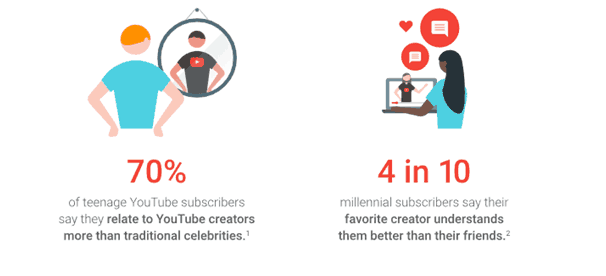
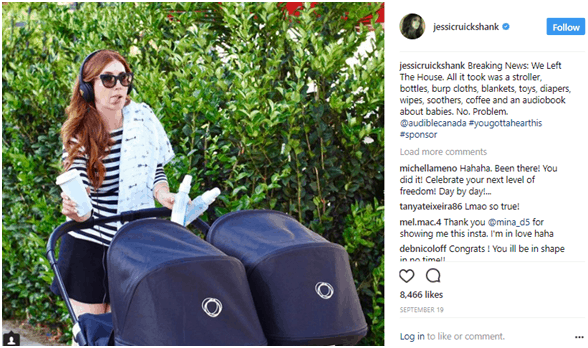


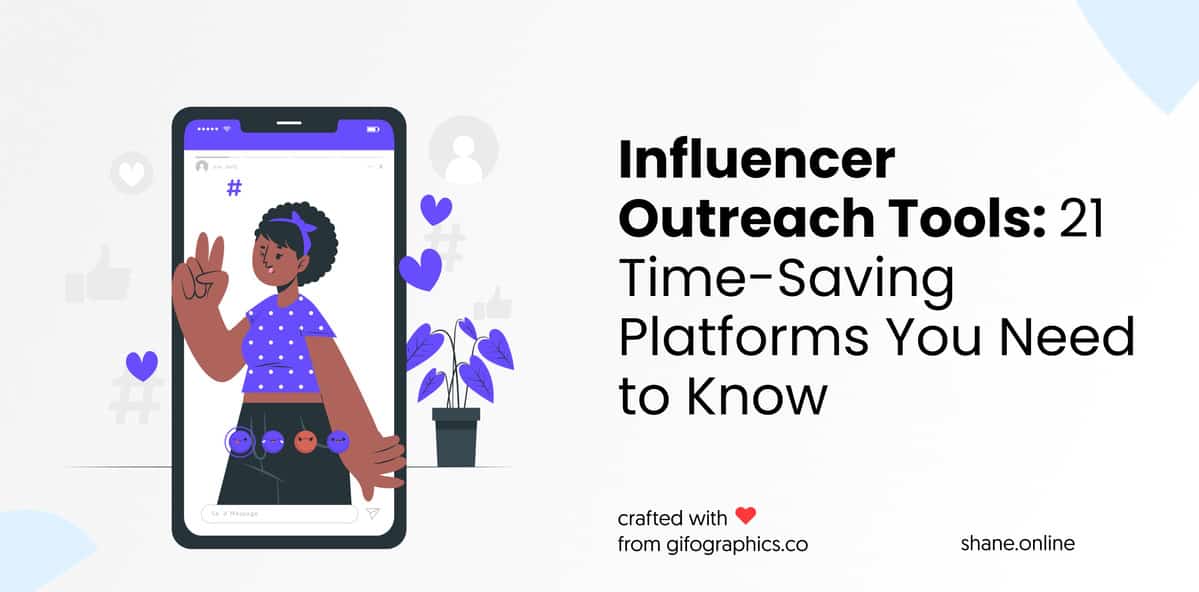
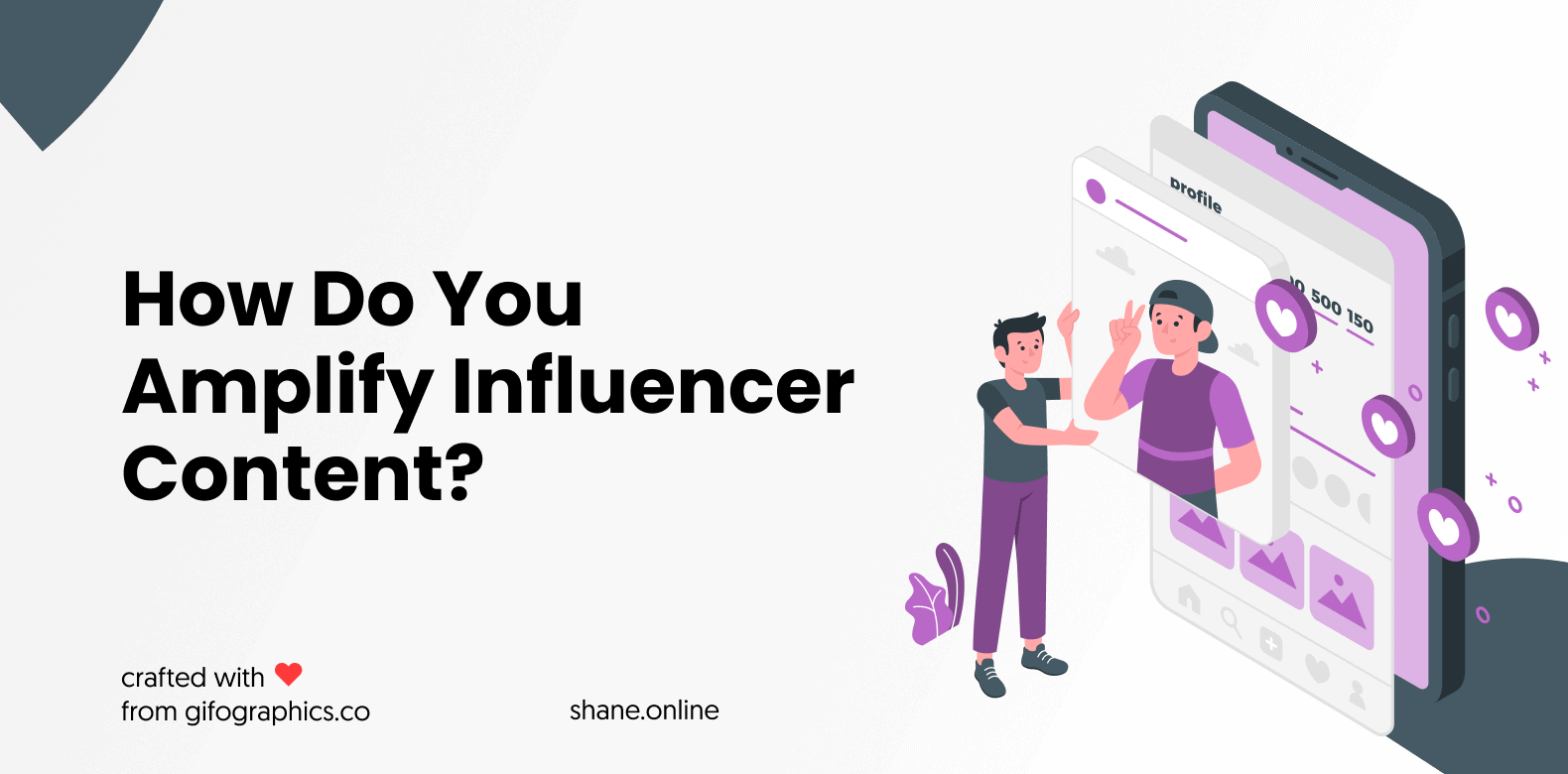
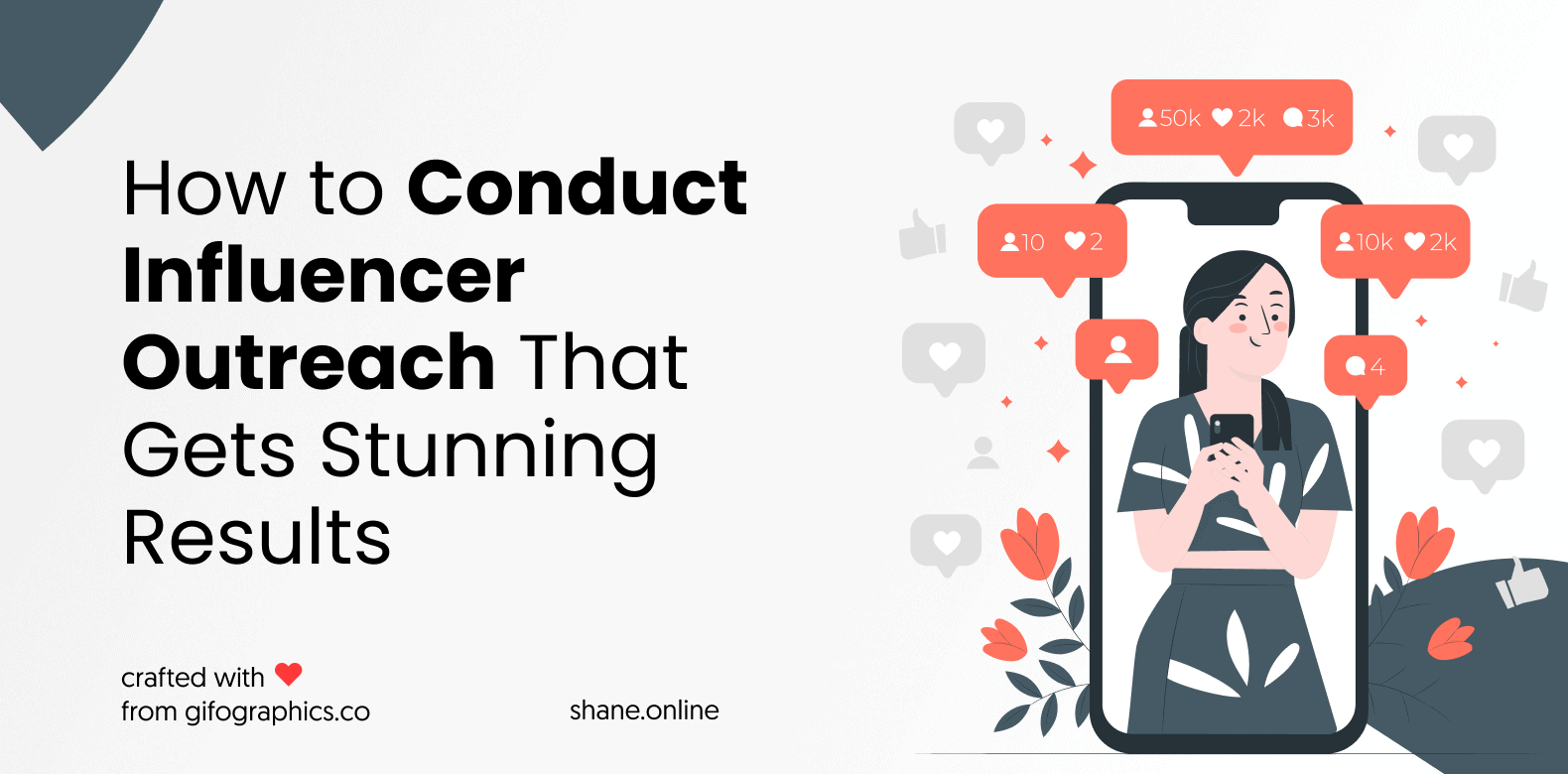

![How to Become an Influencer in [year] [A Beginner’s Guide] 74 How to Become an Influencer [A Beginner’s Guide]](https://shanebarker.com/wp-content/uploads/2020/03/How-to-Become-an-Influencer-A-Beginners-Guide.jpg)
![40+ Top Influencer Marketing Agencies in [year] 75 40+ Top Influencer Marketing Agencies in 2022](https://shanebarker.com/wp-content/uploads/2021/12/Blog-The-Best-Influencer-Marketing-Agency-Top-40.jpeg)

Wow! What a list! Thanks for rounding up all this excellent info and for including me, Shane! Wishing everyone an exciting, successful and influential 2018!!
Awesome post with detailed information of almost every small detail related to Influencer Marketing. I have to learn so many new things through this article. I am definitely going to bookmark this roundup for future reference.
Awesome post!
I really want to thank you so much for this RoundUp.
Greetings.
Amy Browning